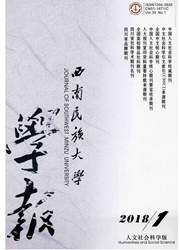

 中文摘要:
中文摘要:
文章通过现实观察,发现在严重自然灾害发生后受损程度不同的旅游景区恢复均较迟缓的现象,进而对灾害地旅游景区进行了细分,界定了非灾害旅游景区和灾害旅游景区,阐明了灾后灾害旅游景区对非灾害旅游景区存在负面的波及效应,致使其游客流失严重、恢复缓慢。借助扎根理论的研究方法,对114名研究对象进行了开放式/半结构化访谈,归纳了此种波及效应产生的原因,并构建了此种波及效应产生机理的概念模型。研究结果表明,严重自然灾害背景下灾害旅游景区对非灾害旅游景区的波及效应有3种,分别是联结性波及效应、整体性波及效应和泛化性波及效应。
 英文摘要:
英文摘要:
In the event of a natural disaster, it is believed that tourist attractions that have not been destroyed recover more quickly than those that have been destroyed. However, this study found that both types of tourist attractions recover slowly by tracing panel data on tourist numbers in Sichuan provence following the Wenchuan Great Earthquake of May 12th , 2008. Because there is little pertinent literature on this situation, the study adopted grounded theory. We defined undestroyed tourist attraction and destroyed tourist attraction by segmentation according to whether the tourist attractions could meet tourist requirements. We then clarified the ripple effect from the destroyed tourist attractions to the undestroyed tourist attractions following a natural disaster leading to tourist loss and slow recovery. We obtained responses from 114 respondents comprising 52 males and 62 females both in verbal interviews and through questionnaires, and collected written responses and sound recordings from a group interview and in-depth interview held at the Wangjiang Campus of Siehuan University in Chengdu, Sichuan provence; Taihang Travel Agency in Changzhi, Shanxi provence; West Lake Scenic Area in Hangzhou, Zhejiang provence; Historical Museum in Mianzhu, Sichuan provence; and Jiuzhai Valley in Aba Tibetan Autonomous Prefecture, Sichuan provence. We randomly chose 100 data samples to code and kept 14 data samples for a theoretical saturation test. After open coding, we obtained 12 categories and 24 concepts, which were unsatisfactory because most were mentioned in previous related research. We then read between the lines and obtained eight categories and 18 concepts through cycle comparative analysis in axial coding. During this procedure, we found new categories and concepts that differed from those found in previous related studies. Furthermore, according to the subject of interest, three categories and four concepts remained after selective coding. Finally, by conducting a theoretical saturation test, we confirmed that
 同期刊论文项目
同期刊论文项目
 同项目期刊论文
同项目期刊论文
 期刊信息
期刊信息
